Tuesday☕️

Trending:
- Yesterday, April 14, 2025, Nvidia announced a $500 billion investment over four years to build AI infrastructure in the United States, partnering with TSMC, Foxconn, Wistron, Amkor, and SPIL. The initiative includes manufacturing facilities in Arizona and Texas, with TSMC producing Nvidia’s Blackwell AI chips in Phoenix and supercomputer plants being established with Foxconn in Houston and Wistron in Dallas, expected to scale production within 12-15 months. This move aims to meet rising AI chip demand, strengthen supply chains, and reduce reliance on overseas manufacturing, aligning with broader U.S. efforts to bolster domestic tech production.

- This follows significant investments from companies like Apple, which pledged $500 billion for U.S. manufacturing, including AI server facilities, and TSMC, which committed $165 billion for Arizona chip plants. Countries like the UAE and Saudi Arabia have also poured hundreds of billions into U.S. AI and data center projects, driven by optimism about America’s technological and economic outlook. These investments reflect confidence in the U.S. as a hub for innovation, spurred by policies encouraging on-shoring and the growing global demand for AI infrastructure.
Economics & Markets:
- Yesterday’s U.S. stock market:

- Yesterday’s commodity market:

- Yesterday’s crypto market:

Geopolitics & Military Activity:

Environment & Weather:
- Yesterday, April 14, 2025, a severe sandstorm impacted central and southern Iraq, affecting cities such as Baghdad, Najaf, and Diwaniyah. The storm reduced visibility to under one kilometer, disrupted air travel at airports in Najaf and Basra, and caused widespread power outages. Strong winds carried dense dust clouds, creating hazardous conditions that grounded flights and limited outdoor activities across the affected regions.

- Around 1,500 people sought hospital treatment for respiratory issues, with Muthanna province reporting around 700 cases. Medical facilities provided oxygen and care, particularly for those with pre-existing conditions like asthma. Authorities advised residents to stay indoors and distributed masks to mitigate health risks. Iraq’s meteorological department attributed the storm’s severity to ongoing drought and shifting weather patterns, noting an increase in such events in recent years.
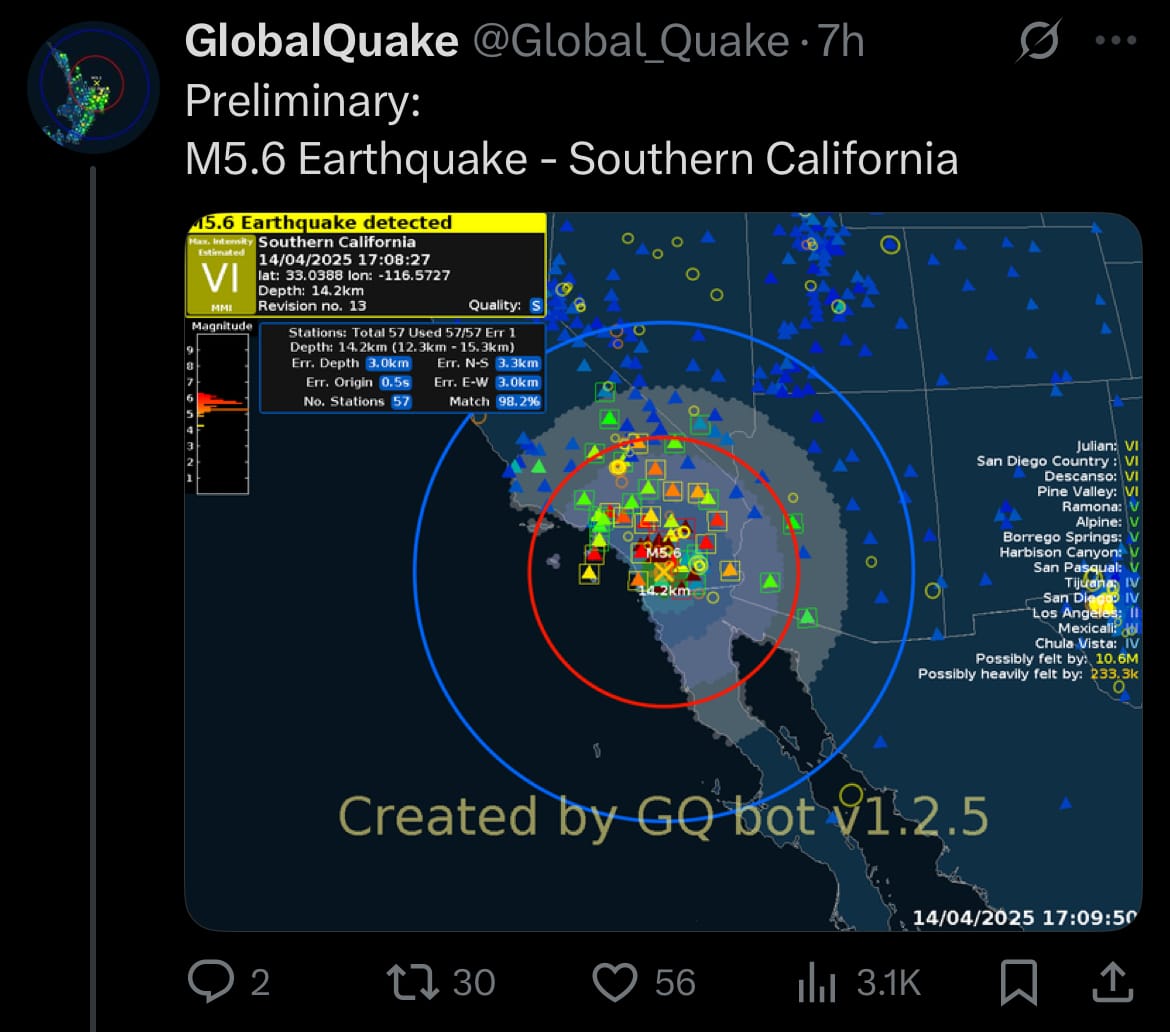
Space:
- Yesterday, April 14, 2025, Blue Origin’s New Shepard NS-31 mission launched from West Texas, carrying six women—Aisha Bowe, Amanda Nguyen, Gayle King, Katy Perry, Kerianne Flynn, and Lauren Sánchez. The 10-minute suborbital flight reached approximately 107 kilometers (66 miles), allowing the crew to experience weightlessness and view Earth before landing safely in the desert. This marked Blue Origin’s 11th crewed flight and the first all-female spaceflight since 1963.
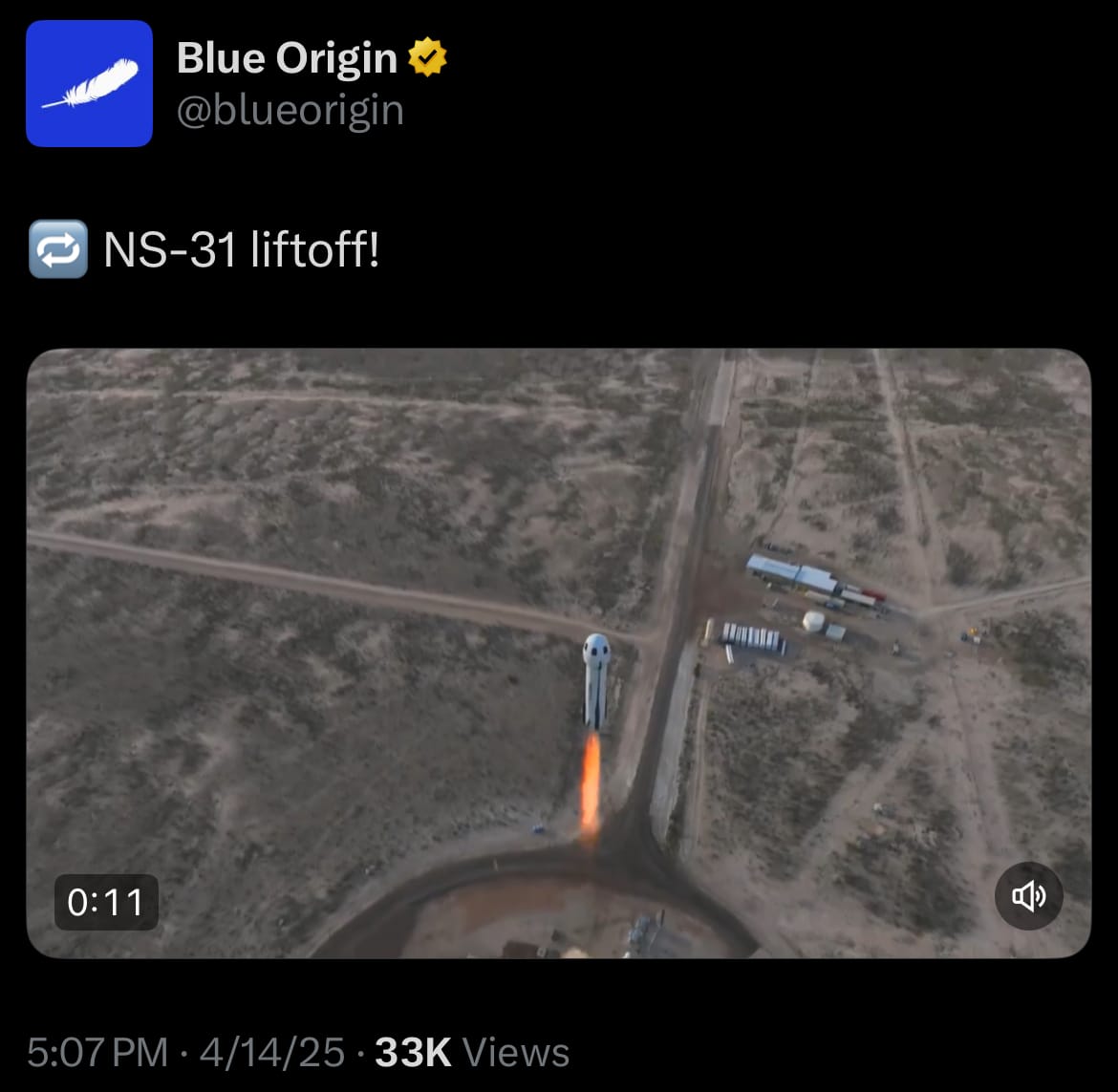
- Yesterday, April 14, 2025, Rocket Lab announced its role in two government programs supporting hypersonic technology development in the United States and the United Kingdom. The U.S. Air Force selected Rocket Lab for its $46 billion Enterprise-Wide Agile Acquisition Contract (EWAAC), active through 2031, to provide testing for advanced technologies. The UK Ministry of Defence also included Rocket Lab in its $1.3 billion Hypersonic Technologies & Capability Development Framework (HTCDF), allowing bids for contracts to advance hypersonic projects.
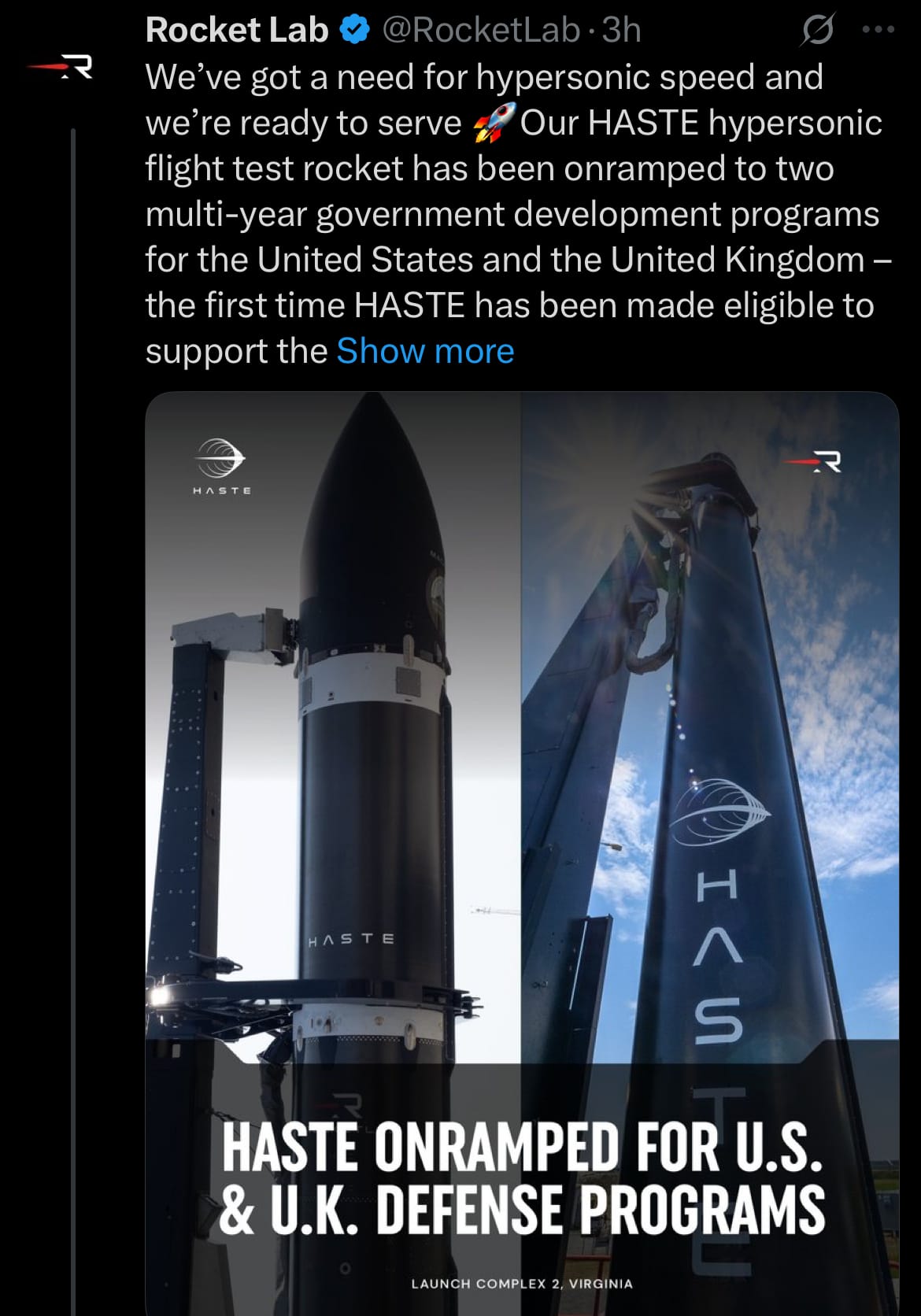
- Rocket Lab’s Hypersonic Accelerator Suborbital Test Electron (HASTE), a modified Electron rocket, supports these efforts by conducting suborbital tests for hypersonic systems, which travel faster than Mach 5. HASTE offers increased payload capacity and a specialized upper stage for frequent, cost-effective testing. The contracts highlight Rocket Lab’s contribution to U.S. and UK defense goals, including collaboration under agreements like AUKUS, to enhance hypersonic research and testing capabilities.
Statistic:
- Largest public oil and gas companies by market capitalization:
- 🇸🇦 Saudi Aramco: $1.672T
- 🇺🇸 Exxon Mobil: $447.19B
- 🇺🇸 Chevron: $236.90B
- 🇬🇧 Shell: $186.44B
- 🇨🇳 PetroChina: $185.75B
- 🇫🇷 TotalEnergies: $125.91B
- 🇺🇸 ConocoPhillips: $109.28B
- 🇨🇳 CNOOC: $105.70B
- 🇺🇸 Southern Company: $99.98B
- 🇨🇦 Enbridge: $95.92B
- 🇦🇪 TAQA: $95.81B
- 🇺🇸 Duke Energy: $93.70B
- 🇨🇳 Sinopec: $86.49B
- 🇧🇷 Petrobras: $71.92B
- 🇬🇧 BP: $70.49B
- 🇺🇸 Williams Companies: $70.01B
- 🇺🇸 Enterprise Products: $65.66B
- 🇳🇴 Equinor: $63.42B
- 🇦🇪 ADNOC Gas: $63.10B
- 🇺🇸 Kinder Morgan: $59.55B
- 🇺🇸 EOG Resources: $59.36B
- 🇷🇺 Rosneft: $58.18B
- 🇺🇸 Energy Transfer Partners: $57.71B
- 🇨🇦 Canadian Natural Resources: $57.49B
- 🇷🇺 Lukoil: $54.84B
Earth Intelligence Update:
- Due to globe marker congestion, we have reduced the default insights to news events, cyber events, and environmental events. To view a specific category, all Heads Up Display (HUD) categories are clickable. To view all, click the “All” button in the top right of the HUD.
- To view, click the image below:
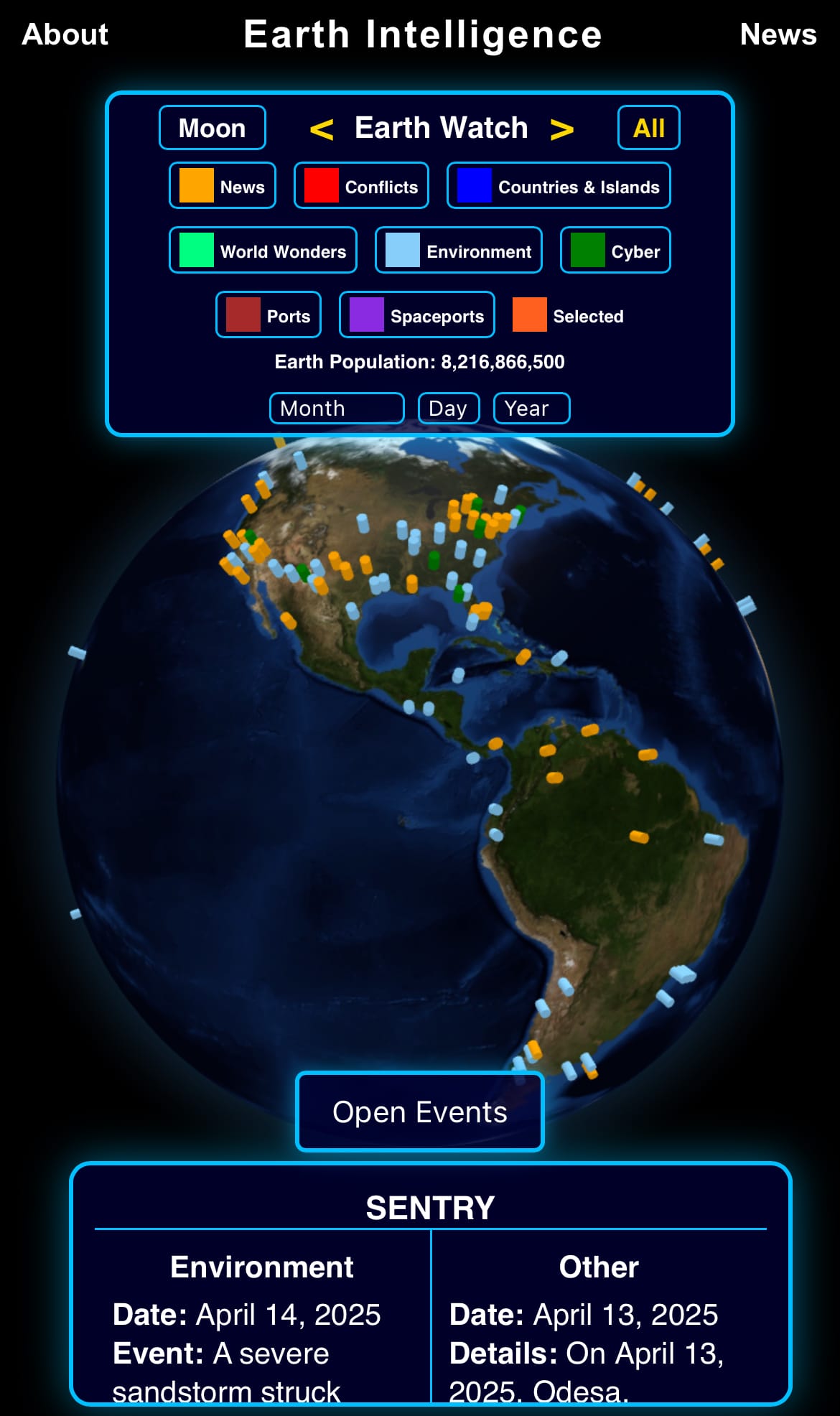
- Currently focused on cause and effect insights to visualize the deeper connections and patterns between economic, geopolitical, cyber, and environmental events. If you have any suggestions, feel free to reach out. Will continue to update on progress.
History:
- The history of U.S. nuclear technology began in the 1930s when scientists like Enrico Fermi and Otto Hahn discovered nuclear fission, splitting atoms to release energy. Concerned that Nazi Germany might develop an atomic bomb, Albert Einstein and Leo Szilard prompted President Franklin Roosevelt to launch the Manhattan Project in 1942. This $2 billion program, led by General Leslie Groves and J. Robert Oppenheimer, employed thousands at Los Alamos for bomb design, Oak Ridge for uranium enrichment, and Hanford for plutonium production. The first test, "Trinity," succeeded in July 1945, followed by atomic bombs dropped on Hiroshima and Nagasaki in August, ending World War II. In 1946, the Atomic Energy Commission took over nuclear oversight. A 1950s attempt at nuclear-powered aircraft failed due to heavy shielding requirements. Nuclear propulsion advanced with the USS Nautilus submarine (1954) and USS Enterprise carrier (1961), though costs led most carriers to use conventional fuel for the time being. The military developed hydrogen bombs by 1952, with the arsenal peaking at over 31,000 warheads in the 1960s. Civilian nuclear power grew from the Shippingport reactor (1957) to 104 reactors by the 1980s, providing about 20% of U.S. electricity, until the Three Mile Island incident (1979) raised safety questions.
- Since the 1980s, U.S. nuclear technology has powered military applications while civilian growth has slowed. Nuclear reactors drive 68 submarines and 11 aircraft carriers, using highly enriched uranium for long, reliable missions, with designs proven safe through rigorous testing. The military maintains about 3,000-5,000 nuclear warheads, managed without tests since 1992 using advanced simulations. Civilian reactors, now at 93, generate roughly 18% of U.S. electricity, but no new plants have been built due to high costs and public caution following past incidents. Modern reactor designs incorporate passive safety systems, and small modular reactors (SMRs), like NuScale’s, offer potential for affordable, scalable power, yet remain delayed until at least 2030. The same nuclear technology deemed safe for submarines and carriers faces a complex regulatory environment for civilian use, with lengthy approvals and bureaucratic processes limiting rapid development. While research into SMRs and fusion continues, these barriers hinder the industry’s ability to expand and meet clean energy demands, despite its established safety in military applications.
Image of the day:

Thanks for reading!
Earth is complicated, we make it simple.
Click image to view the Earth Intelligence System:
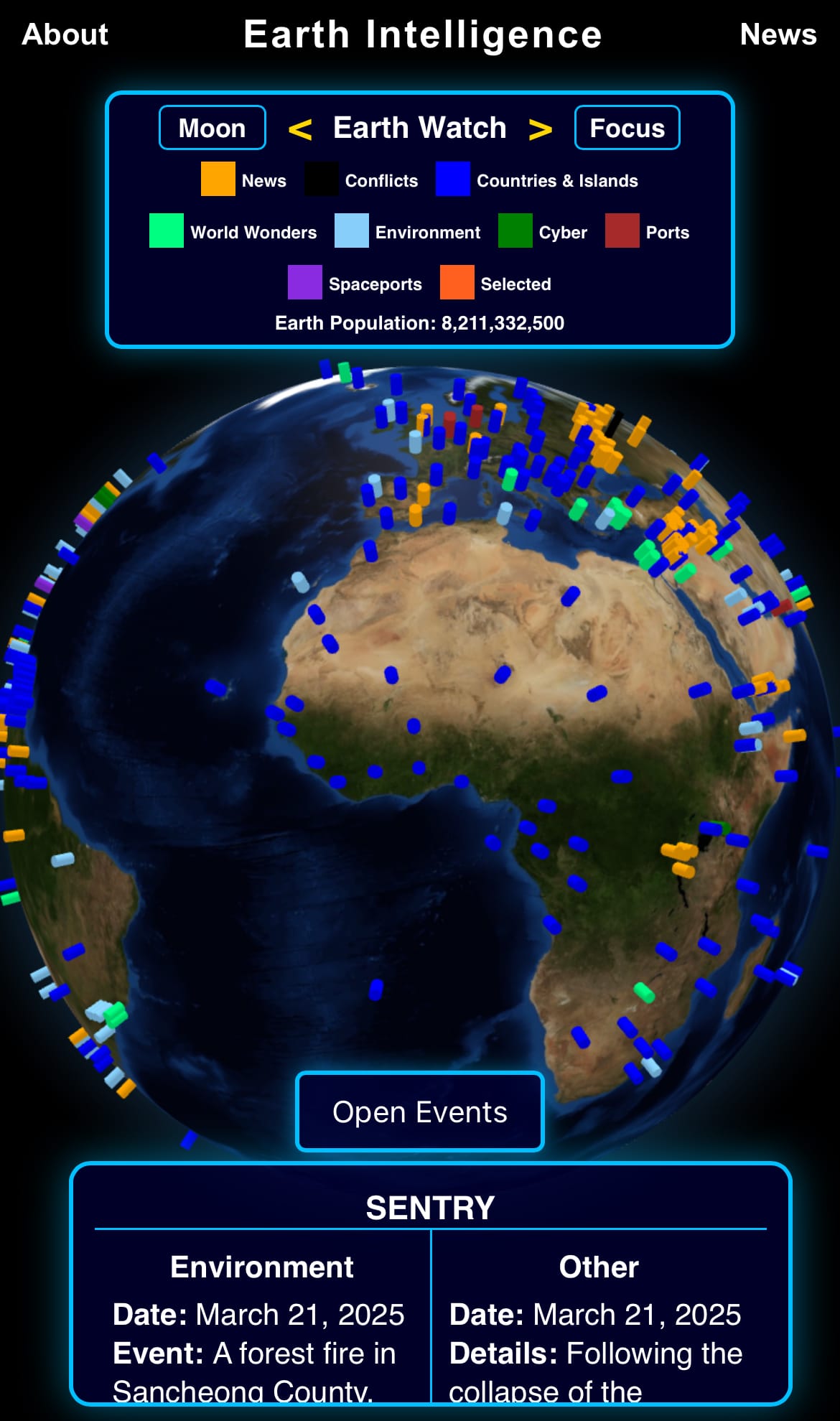


Support/Suggestions Email:
earthintelligence@earthintel.news




